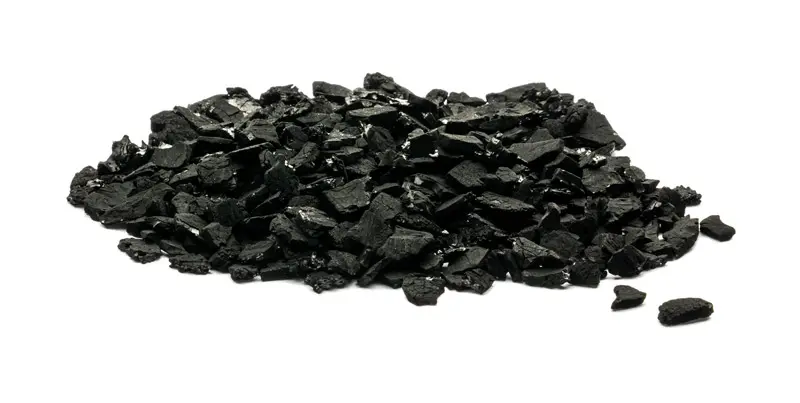Creosote
Creosote is the portion of chemical products obtained by the distillation of a tar that remains heavier than water, notably useful for its anti-septic and preservative properties.[1] It is produced in some quantities from the burning of wood and coal in blast furnaces and fireplaces; commonly found inside chimney flues when the wood or coal burns incompletely, producing soot and tarry smoke, and is the compound responsible for the preservation and the flavor of meat in the process of smoking. The name is derived from the Greek kréas (κÏÎας), meaning “flesh”, and sÅtÄ“r (σωτήÏ), meaning “preserver”.[2]
The two main types in industrial production are wood-tar creosote and coal-tar creosote — the coal-tar variety, having stronger and more toxic properties, has chiefly been used as a preservative for wood; while the wood-tar variety has been used for meat preservation, wood treatment, and for medicinal purposes as an expectorant, anti-septic, astringent, anaesthetic and laxative, though these have mostly been replaced by newer medicines. Coal-tar creosote had also in the past been used as an escharotic to burn malignant skin tissue and in dentistry to prevent necrosis, but no longer is used that way because of its toxic, carcinogenic properties and because better and safer treatments are now available. Varieties of creosote have also been made from both petroleum and oil shale called oil-tar creosote, when derived from the oil tar, and water-gas-tar creosote when derived from the water gas tar. Creosote also has been made from pre-coal formations such as lignite, giving to lignite-tar creosote and peat, giving to peat-tar creosote.
Creosotes are commercially valuable, and therefore are produced industrially on a large scale, either for direct use, or as raw material for the production or extraction of various chemicals. There are several other names for such fluids, but most aren’t trustworthy, being regional, or applying only some variants of them, or to other fluids as well. For example, pitch oil is used both for some kinds of creosote-like fluids and for kerosene.
 HS-AC
HS-AC